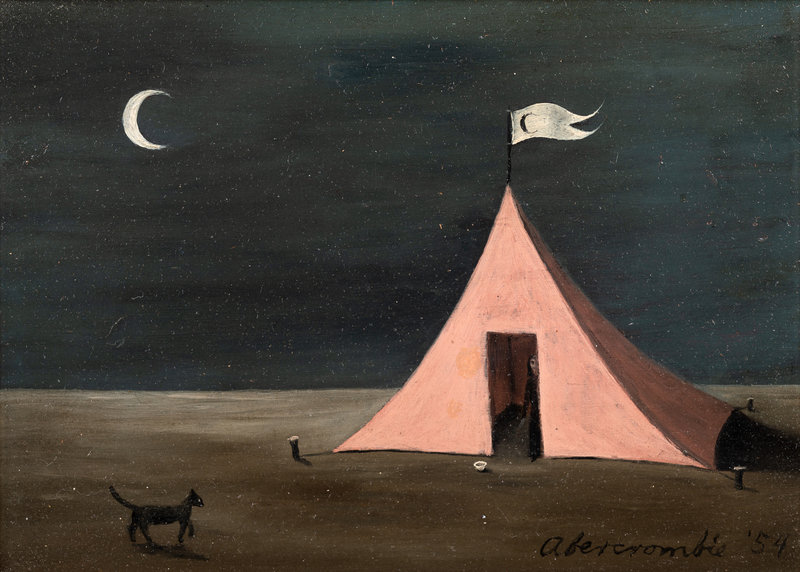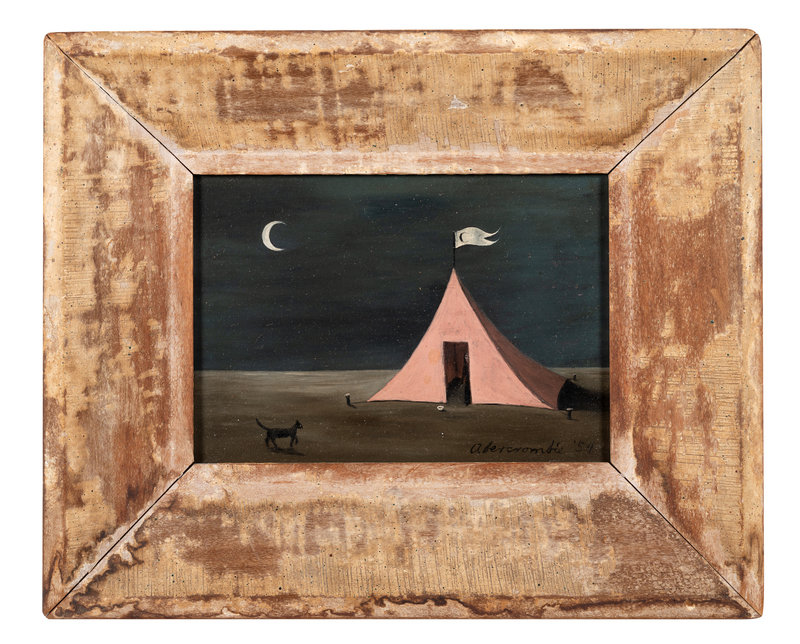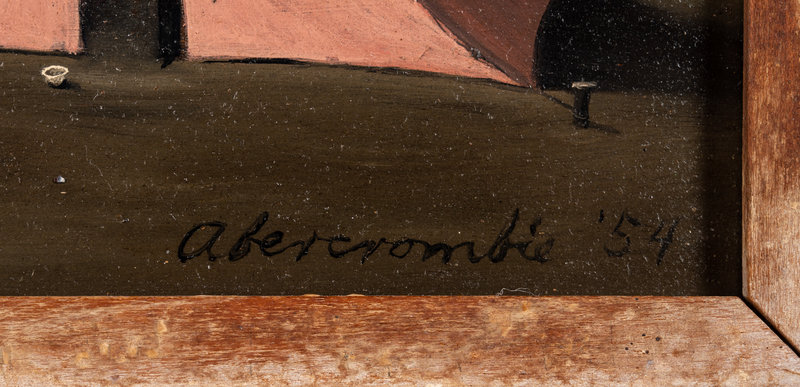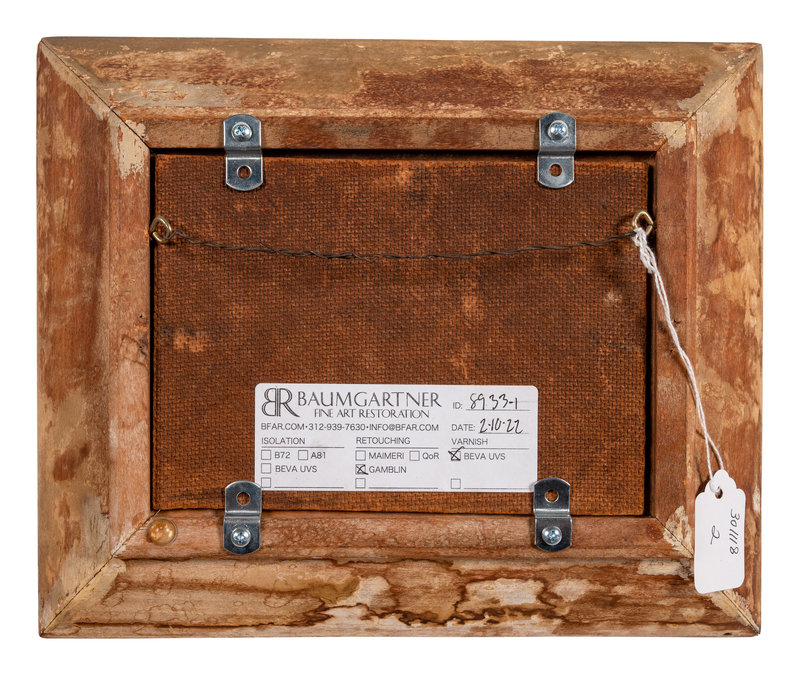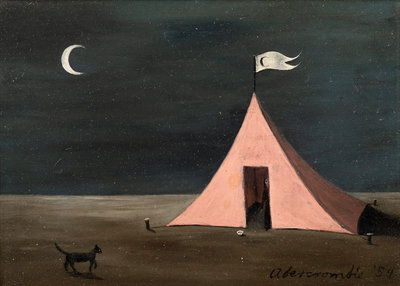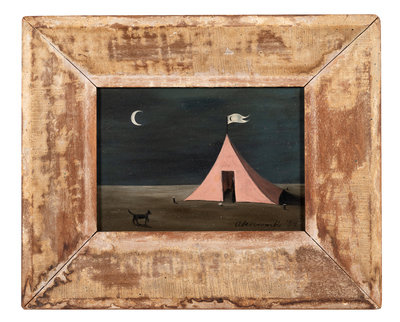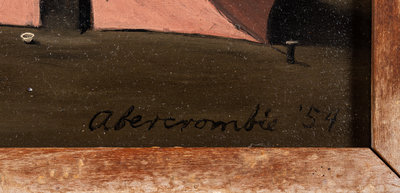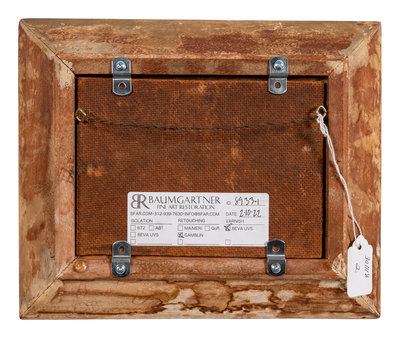Gertrude Abercrombie
(American, 1909-1977)
The Pink Tent
, 1954
Sale 1027 - Post War & Contemporary Art
May 11, 2022
10:00AM CT
Live / Chicago
Own a similar item?
Estimate
$40,000 -
60,000
Price Realized
$312,500
Sold prices are inclusive of Buyer’s Premium
Lot Description
Gertrude Abercrombie
(American, 1909-1977)
The Pink Tent
, 1954oil on masonite
signed Abercrombie and dated (lower right)
5 x 7 inches.
We are grateful for the research conducted by Susan Weininger, Professor Emerita, Roosevelt University.
Provenance:
Private Collection
Sold: Leslie Hindman Auctioneers, Chicago, May 3, 2009, Lot 396
Acquired directly from the above sale by the present owner
Exhibited:
Chicago, Marshall Fields, 1954, no. 1
Chicago, Esquire Theatre, 1955
Milwaukee, Wisconsin and Lake Forest, Illinois Art Fairs
Literature:
Robert Storr, Susan Weininger, Robert Cozzolino, Robert, Dinah Livingston, Studs Terkel, Gertrude Abercrombie, New York, 2018, pp. 378; 485, illus.
Lot Note:
Much like the jazz she adored, Gertrude Abercrombie riffed in her art with repeated symbols and images, combined to create otherworldly scenes rooted in the real. Her enigmatic paintings full of recurring cyphers caused her to be grouped with the Surrealists or magic realists. Abercrombie embraced the label, stating, “I am not interested in complicated nor in the commonplace, I like to paint simple things that are a little strange. My work comes directly from my inner consciousness and it must come easily. It is a process of selection and reduction (quoted in Donna Seaman, “Girl Searching,” Identity Unknown, p. 31). Her paintings are also deeply autobiographical and illuminate a complex psyche.
Provenance:
Private Collection
Sold: Leslie Hindman Auctioneers, Chicago, May 3, 2009, Lot 396
Acquired directly from the above sale by the present owner
Exhibited:
Chicago, Marshall Fields, 1954, no. 1
Chicago, Esquire Theatre, 1955
Milwaukee, Wisconsin and Lake Forest, Illinois Art Fairs
Literature:
Robert Storr, Susan Weininger, Robert Cozzolino, Robert, Dinah Livingston, Studs Terkel, Gertrude Abercrombie, New York, 2018, pp. 378; 485, illus.
Lot Note:
Much like the jazz she adored, Gertrude Abercrombie riffed in her art with repeated symbols and images, combined to create otherworldly scenes rooted in the real. Her enigmatic paintings full of recurring cyphers caused her to be grouped with the Surrealists or magic realists. Abercrombie embraced the label, stating, “I am not interested in complicated nor in the commonplace, I like to paint simple things that are a little strange. My work comes directly from my inner consciousness and it must come easily. It is a process of selection and reduction (quoted in Donna Seaman, “Girl Searching,” Identity Unknown, p. 31). Her paintings are also deeply autobiographical and illuminate a complex psyche.
In addition to cats, moons, trees, and gloves (among other symbols), tents were added to Abercrombie’s personal lexicon during the late 1940s and early 1950s. The germinal tent painting, Between Two Camps, 1948 (Illinois State Museum, Springfield), is related to Abercrombie’s divorce and remarriage the same year. As an inherently precarious and temporary dwelling, a tent is used as a metaphor for her failing first marriage. The artist painted rooms for most of her career, almost always sealed and inaccessible, so solid that they take on the feelings of emptiness and inability to connect that the artist often felt. As an enclosure, the tent parallels the ubiquitous rooms that serve as psychic self-portraits but are more fraught with uncertainty.
The significance of a tent as a transitory dwelling continues in The Pink Tent, 1954. Here, the tent dominates the austere landscape, with a waxing crescent moon in a dark sky. A woman, half-in, half-out of the tent, waits for a black cat to find the small bowl set out for it. A view inside the dwelling, however, reveals not the expected diagonal fabric sides, but vertical and horizontal walls. The paradox of openness versus closed, signified by the undone tent flap that opens into the small, closed room, is unusual for the artist, and while optimistic, not without its subtle tensions. The 1950s was a productive time, with Abercrombie’s social life filled with parties and jazz, her second marriage still intact. Yet it is clear she felt pulled in two different directions. The artist’s ability to depict both self-doubt and confidence simultaneously engages the viewer in subtle and sometimes conflicting feelings and makes the work absorbing and continually interesting. This is Abercrombie at her best.
Condition Report
Auction Specialist
